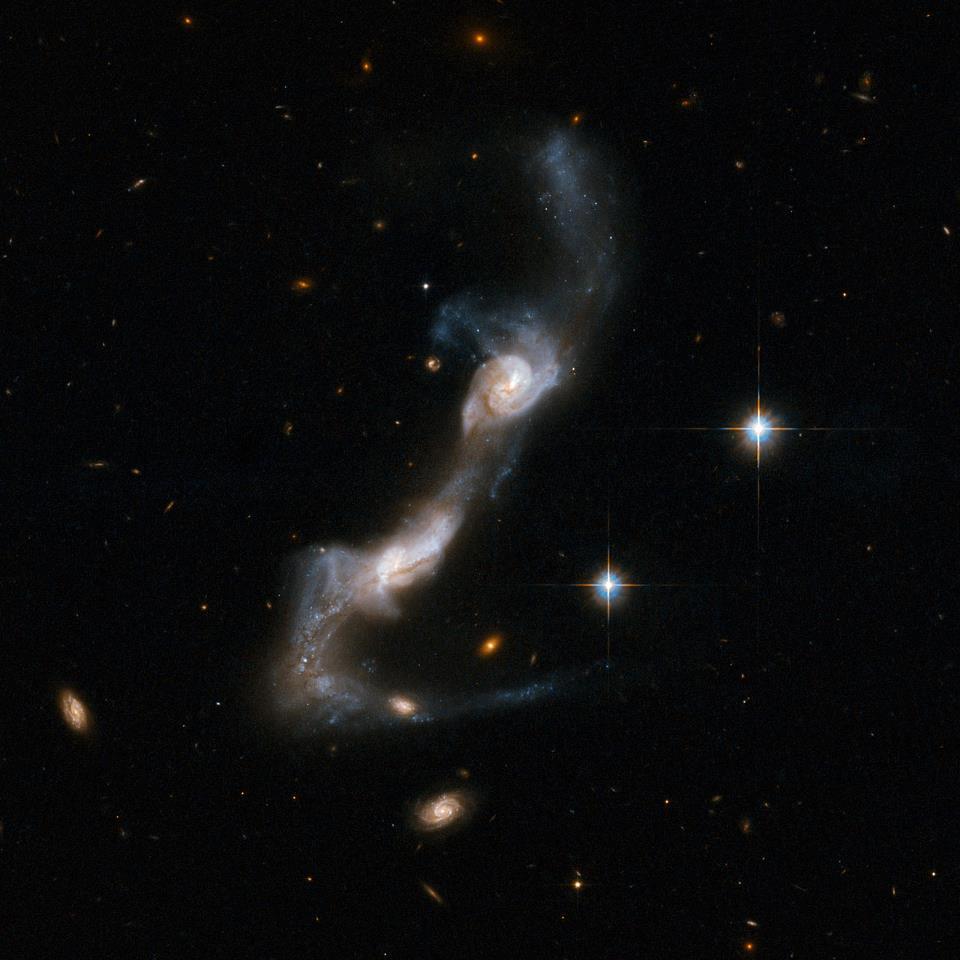

Image Credit: NASA, ESA, the Hubble Heritage Team (STScI/AURA)-ESA/Hubble Collaboration and A. Evans (University of Virginia, Charlottesville/NRAO/Stony Brook University)
This distant celestial scene is located more than 400 million light-years from Earth, in the constellation of Ursa Major. UGC 8335, as its called, began the process of transforming a few million years ago, through gravitational perturbations from a nearby galaxy, twisting the tidal tails of celestial material into a strangely-shaped hook.
Both galaxies pictured in this image are spiral, though once the process is over, with both galaxies united as one, the larger galaxy will be elliptical, perhaps mimicking the structure of our own galaxy, the Milky Way. That is, after the dust settles once the Andromeda galaxy, our closest celestial neighbor, merges with our own in about 5 billion years. And if we could see it from the perspective of a planet orbiting another star in the Andromeda galaxy.
UGC 8335 is the 238th entry to the ‘Atlas of Peculiar Galaxies‘ catalogue, which includes the famous Antennae Galaxies, the Ring Galaxies, the Pinwheel Galaxy and Centaurus A, bringing the grand total up to 338 (at this time).